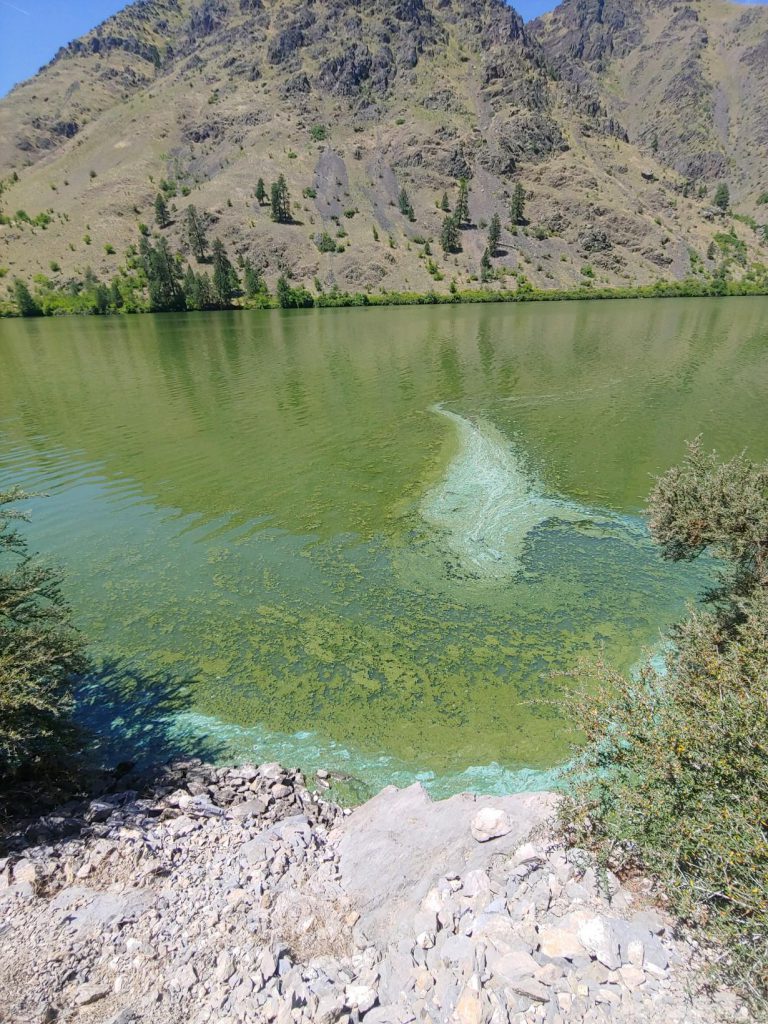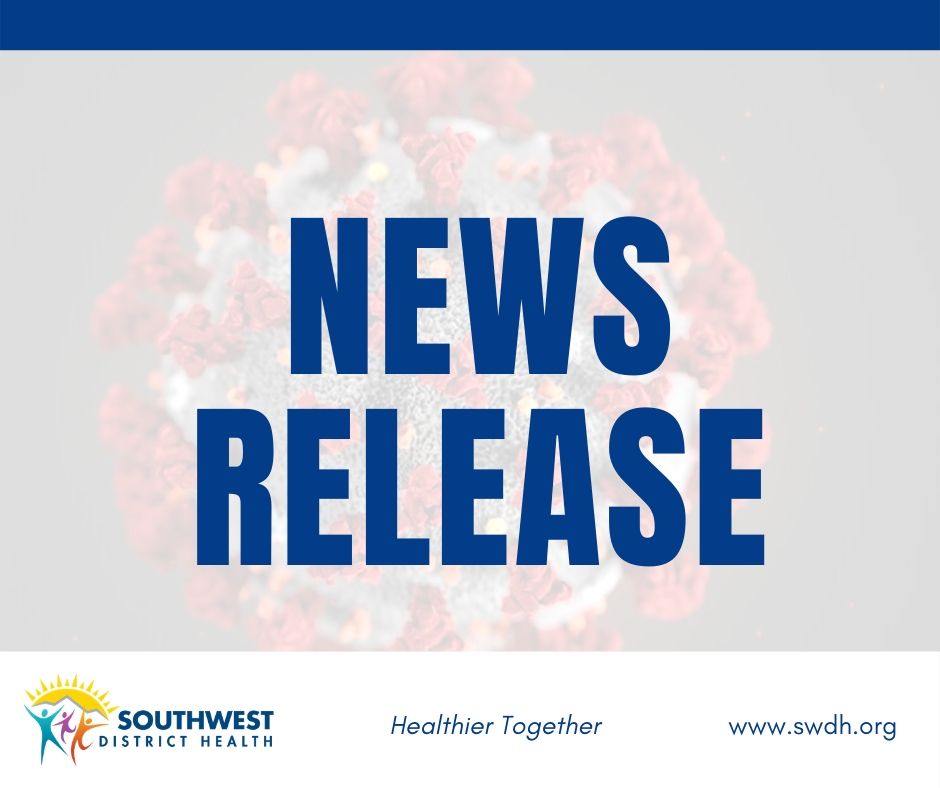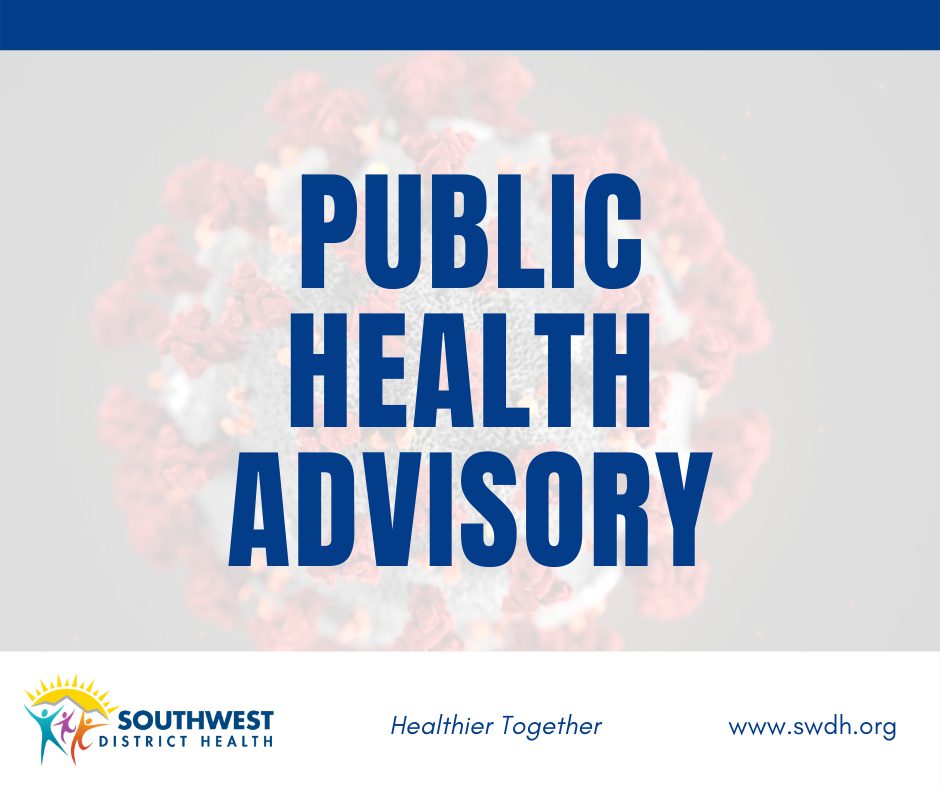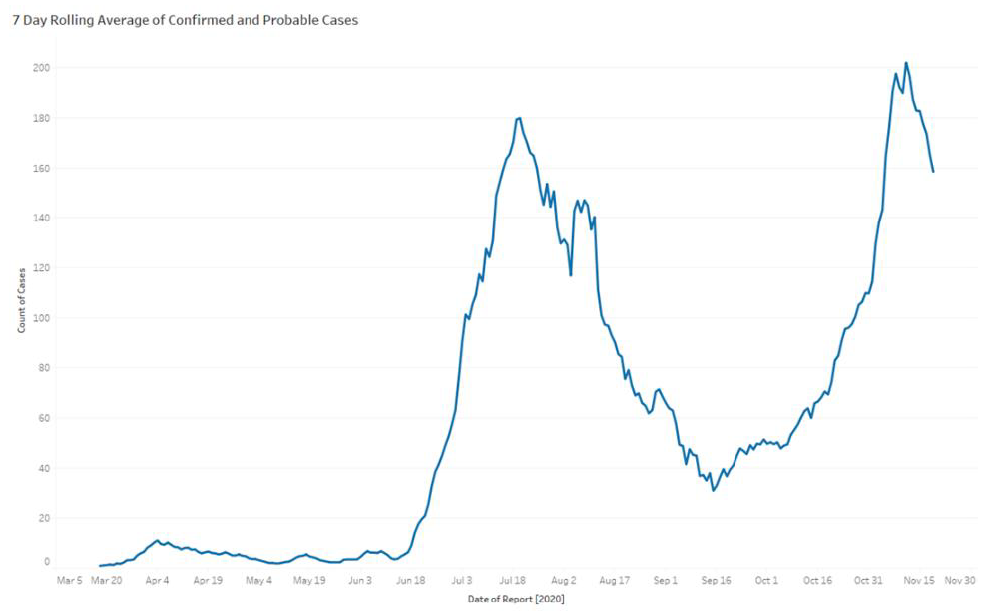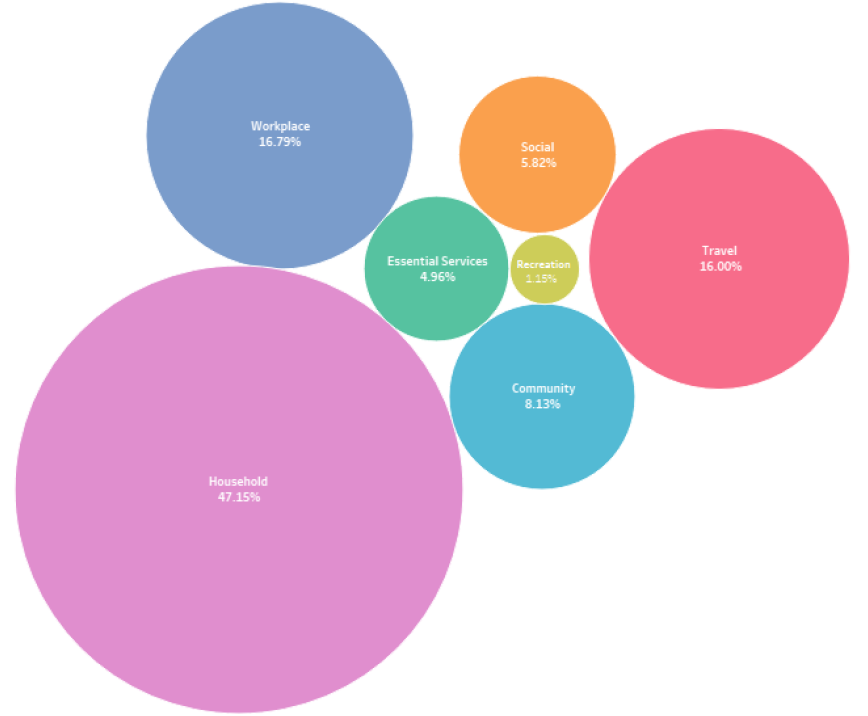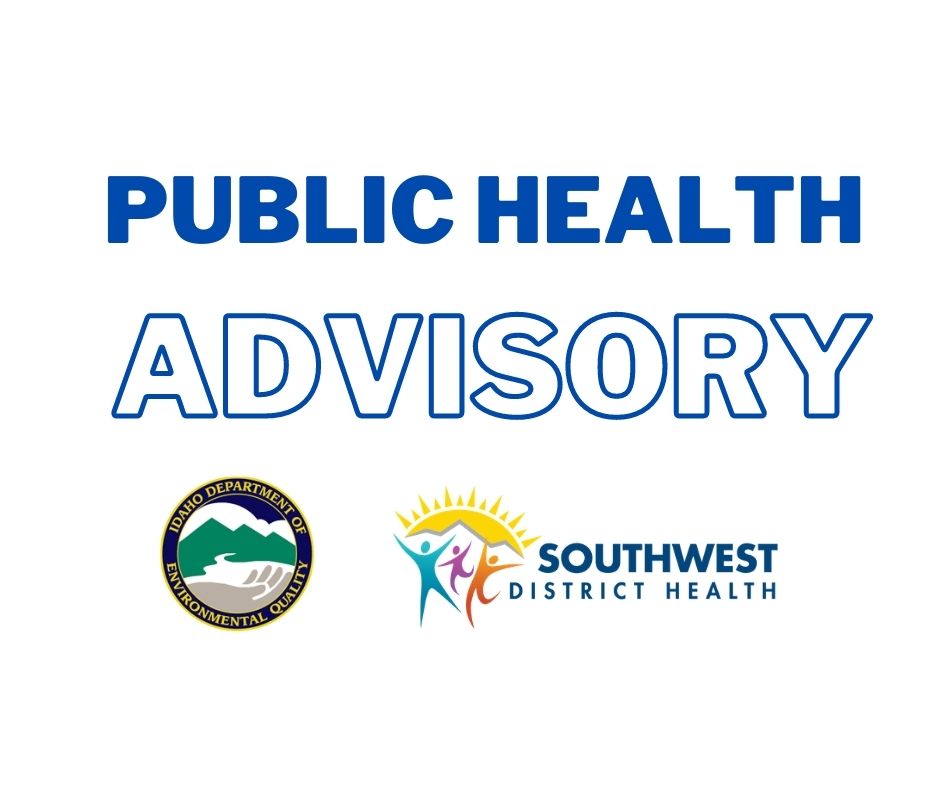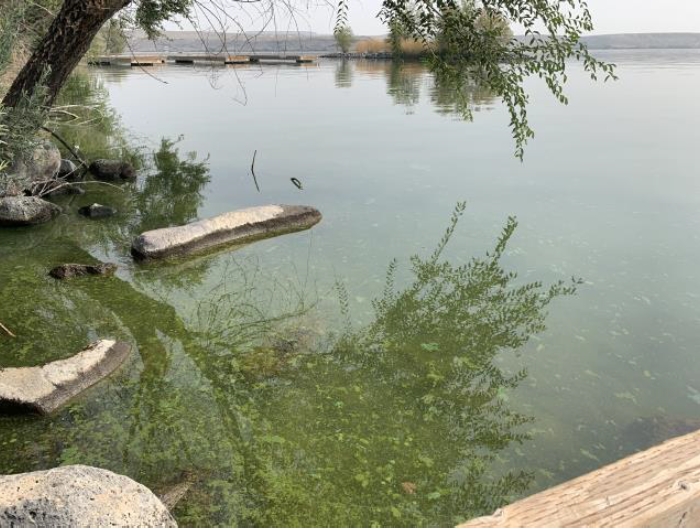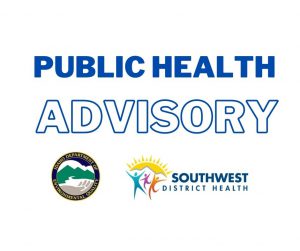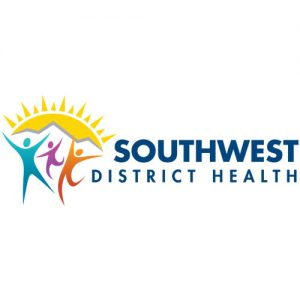Public Health Advisory
Health advisories issued for HELLS CANYON RESERVOIR and BROWNLEE RESERVOIR
Southwest District Health (SWDH) and the Idaho Department of Environmental Quality (DEQ) are issuing health advisories for HELLS CANYON RESERVOIR in the area of the Big Bar Camping area and BROWNLEE RESERVOIR in the area of Woodhead Park, urging residents to use caution when recreating in or near the water.
Recent samples taken from the water bodies indicate high concentrations of toxin-producing cyanobacteria, which can be harmful to people, pets, and livestock. Those with liver or kidney damage are at an increased risk of illness.
Cyanobacteria are a natural part of Idaho’s water bodies. When temperatures rise, their populations can bloom and toxic chemical compounds, or cyanotoxins, can be released into the water. Blooms can vary in appearance, and may look like mats, foam, spilled paint, or surface scum, and have a foul odor.
When recreating near or in HELLS CANYON RESERVOIR and BROWNLEE RESERVOIR, take the following precautions while the advisory is in effect:
- Avoid swimming, wading, or other activities. Take extra precautions to ensure children, pets, and livestock are not exposed to the water.
- Do not drink or cook with water containing a bloom. Boiling and filtering the water can increase the risk.
- Wash your hands thoroughly after handling fish caught in water experiencing a bloom. Cyanotoxins can accumulate in fish and the risk to people is being researched. Any fish caught should be cleaned and washed thoroughly in uncontaminated water and any internal organs disposed of before consumption. If people choose to eat fish from this area, filet the fish and remove all of the fat, skin, and organs before cooking.
- Clean with potable water as soon as possible if water contacts skin or pet fur.
Symptoms of cyanotoxin exposure include rashes, hives, diarrhea, vomiting, coughing, and/or wheezing. More severe symptoms affecting the liver and nervous system may result from ingesting water. If symptoms persist, consult your healthcare provider.
The public will be advised when it is likely the concern no longer exists.
For more information about harmful algal blooms, visit DEQ’s website at http://www.deq.idaho.gov/water-quality/surface-water/recreation-health-advisories/
Health advisories issued for HELLS CANYON RESERVOIR and BROWNLEE RESERVOIR
Southwest District Health (SWDH) and the Idaho Department of Environmental Quality (DEQ) are issuing health advisories for HELLS CANYON RESERVOIR in the area of the Big Bar Camping area and BROWNLEE RESERVOIR in the area of Woodhead Park, urging residents to use caution when recreating in or near the water.
Recent samples taken from the water bodies indicate high concentrations of toxin-producing cyanobacteria, which can be harmful to people, pets, and livestock. Those with liver or kidney damage are at an increased risk of illness.
Cyanobacteria are a natural part of Idaho’s water bodies. When temperatures rise, their populations can bloom and toxic chemical compounds, or cyanotoxins, can be released into the water. Blooms can vary in appearance, and may look like mats, foam, spilled paint, or surface scum, and have a foul odor.
When recreating near or in HELLS CANYON RESERVOIR and BROWNLEE RESERVOIR, take the following precautions while the advisory is in effect:
- Avoid swimming, wading, or other activities. Take extra precautions to ensure children, pets, and livestock are not exposed to the water.
- Do not drink or cook with water containing a bloom. Boiling and filtering the water can increase the risk.
- Wash your hands thoroughly after handling fish caught in water experiencing a bloom. Cyanotoxins can accumulate in fish and the risk to people is being researched. Any fish caught should be cleaned and washed thoroughly in uncontaminated water and any internal organs disposed of before consumption. If people choose to eat fish from this area, filet the fish and remove all of the fat, skin, and organs before cooking.
- Clean with potable water as soon as possible if water contacts skin or pet fur.
Symptoms of cyanotoxin exposure include rashes, hives, diarrhea, vomiting, coughing, and/or wheezing. More severe symptoms affecting the liver and nervous system may result from ingesting water. If symptoms persist, consult your healthcare provider.
The public will be advised when it is likely the concern no longer exists.
For more information about harmful algal blooms, visit DEQ’s website at http://www.deq.idaho.gov/water-quality/surface-water/recreation-health-advisories/
###
DEQ Media Contact
Chase Cusack 208.373.0550 Chase.Cusack@deq.idaho.gov
SWDH Media Contact
Katrina Williams 208.455.5317 Katrina.Williams@phd3.idaho.gov
